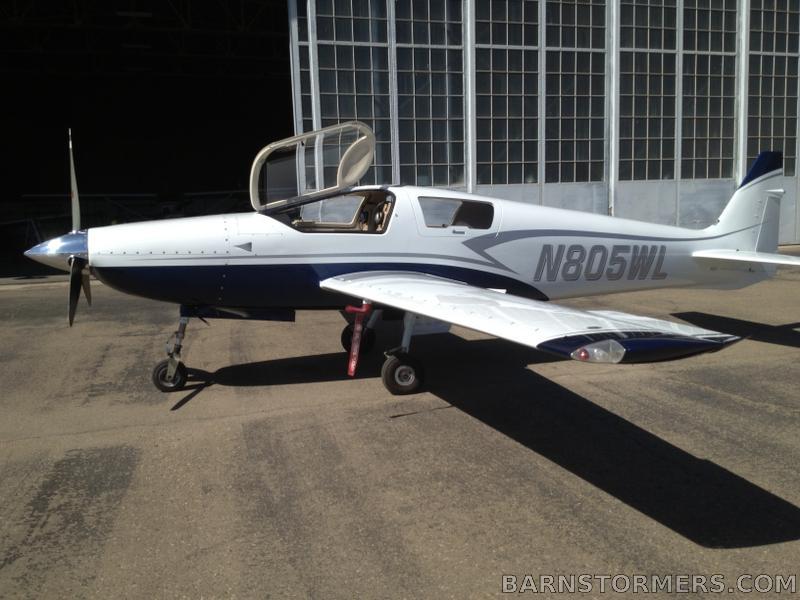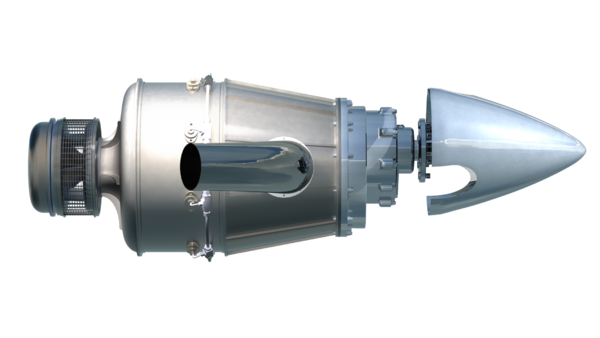-
Posts
41 -
Joined
-
Last visited
-
Days Won
1
Content Type
Profiles
Forums
Gallery
Downloads
Blogs
Events
Store
Aircraft
Resources
Tutorials
Articles
Classifieds
Movies
Books
Community Map
Quizzes
Posts posted by TurbAero
-
-
I am aware of a rare Comanche 400. It is well cared for but is currently undergoing a major refit and service. Please PM me if this might take your fancy. I can speak with the owner if you are interested to gauge his interest to potentially sell.
-
If you can do a
1. single power lever controlled
2. 120hp turbine
3. with a CS prop
4. for less weight and complexity than a 914/915
5. with a SFC of 600g/hp/hr
for the same $$ as the 914/915 with CS prop I think you will find a fair few takers in the high end RAAus group and the fast GA experimental ... except RAAus tech will have a fainting spell over them.
67'ish L/H of jet A for a 90hp delivered cruise is not unbelievable and would be accepted by those who like the cache of a turbo prop as much as those that like the ability to hold that 90-120hp up to max cruise up as high as we are allowed ... looking forward to seeing them appear.
And while not your issue I am still sore about the deposit I lost on the lightening bug kit back in '97 ... RFW were a bunch of scammers ... but I am happy that an alternate engine is available and being put forward for the airframe ... my original still in crate 100hp 2SI sits in the corner of the storeroom just mocking me.
Kasper, you have my immediate admiration for being a fan of the Bug and it's a pity that you were let down by RFW. I've got 2 x 2si engines that have been taken out of Bugs adorning a hangar floor in the US. When I've finished my resurrection of the Bug (a side project of passion for me), I'll offer you a new kit that will be fully COD so you can't get burned. You could then put a -120 or -200 into it!
As for your 5 criteria above, our aim for the -120 is to meet all those criteria but with a much better SFC. A target of 300g/hp/hr is pretty close to where we hope to end up with the -120. The recuperator, according to my engineers, will be more influential on the -120 than the -200 due to the smaller mass flow through it.
Dave
-
 2
2
-
-
Unfortunately at the moment, I cannot go into specific detail around our technology and materials etc because we are in the process of patenting and protecting our IP. I guess what I can say is that we are aiming for a TBO north of 2000 hours for these engines and the technology and materials used in the model aircraft engines does not come close to offering the dependability and robustness required by our engines. For an engine that may operate in snow or desert sand storms and everything in between, we need to utilise durable materials. FYI, an AL compressor wheel does not meet the structural requirements for the compressor for our 200hp engine. The bearings used will reach the TBO, not like the 50 hours on a model aircraft engine. This philosophy and need for dependability and robustness extends to all components of the engine.
Dave
-
As an addendum, my engineers are exceptionally keen to complete the detailed design of the 120hp turboprop (the preliminary design work has been completed). They are super excited about what they can do with that engine. Of course, the -120 will be more appropriate to the majority of the aircraft operated by participants of this forum although with a price tag likely between the Rotax 914 and Rotax 915, it will be more suitable for those that have a high utilisation rate for their aircraft where the economic benefits will be evident, or for those that want the other turbine benefits and can bear the cost. Unfortunately, it's not possible to make one for the same price as a Jabiru or Hirth or Aerovee etc.
Dave
-
I used to bring in Model turbines and also service and had a Schenck balancer for them here. Until they stopped doing model ones of about 20kg thrust and sold their company to a drone maker who produced 100kg thrust engines. They all only had a single stage so always started easily with compressed air first when they came out then we used electric motors and they were gas start but now its all kero start.
Single stage isn't as efficient how are you going to get fuel efficiency?... Most of the larger turbines really suck the fuel up...20kg thrust engine most used around 1400ml per minute at full power
Kyle,
There are a few ways to improve fuel efficiency for a gas turbine engine:
1. Increased pressure ratios
2. Increased temperatures
3. Recuperation
1 and 2 generally result in the need for multi-stage compressors and potentially multi-stage turbines (cost and complexity), the need for different and exotic materials (cost!!) plus there are considerable design issues to be overcome by increasing these parameters. The improvement in efficiency offered by these options is not brilliant.
3 however allows, and indeed requires a lower pressure ratio that can comfortably be accommodated using a single stage compressor, and even though the technology associated with recuperators (compact heat exchangers) is extremely challenging to get the required efficiency in a small package, the improvement in fuel efficiency offered by a recuperator over an identical non-recuperated engine is up to 30%. Temperatures cam also be maintained at "normal" levels where exotic materials are not required.
We have designed our engine to be optimised at 10,000' where the unrecuperated version of our engine would have a specific fuel consumption in the order of 0.65 lbs/hp/hr (with apologies to the metric folks - I just figure more folks think in hp than kW) while our modestly recuperated version will have a SFC of around 0.52 lbs/hp/hr, which is around 20% improvement. To get that improvement through pressure ratio and temperature increases, we would probably struggle technically and the cost and level of difficulty in manufacturing the engine would rise significantly.
It is imperative that we contain the cost of the engine to make it competitive in the market. At the moment, our engine will have a higher sticker price than the Lycomings and Continentals and their clones, but maintenance will be less, TBO will be much greater, reliability of the turbine should be better than for the pistons, the cost of overhaul should be less than for the LyContis, fuel burn will be marginally higher in general (although those that can cruise in the FLs will potentially see some savings), but the fuel is a lot cheaper. What is lost in sticker price should be made up for over the life cycle of the engine.
Our engines will not suit everyone nor will they be appropriate for all applications. However, for many, they may suit and may have appeal. I know for me it is a no-brainer to put a cost-effective fuel-efficient turbine in my projects.
As an exercise, let me run through the benefits to one of my own projects as follows:
I have a kit for a White Lightning 4 seat aircraft which is currently under construction. The kit is shown below, along with a photo of a completed and flying WL.
The WL was designed around a 210hp Continental IO360. The owner of the WL N805WL shown above advises me that he flight plans at 12,000' / 215ktas / 9.5 gph (36 litres ph). This is consistent with the feedback that I have from other WL owners who cruise in the 215-225 ktas range burning 9.5-12 gph (36-45 litres ph).
I own the design data for the WL and from the performance graphs generated by the designer, a 150shp cruise at 10,000' would offer a cruise TAS of 230ktas and for my turbine, 150shp at 10,000' will offer a fuel flow of 11.5usg/43 litres ph. (150hp x 0.52 lbs/hp/hr = 78 lbs/hr of jet fuel). At 10,000' with my turbine, I shall have the ability to crank up the power to a maximum cruise power setting of 190hp and cruise at about 250ktas @ 14.5usg/55 litres ph. if I wanted to get somewhere faster. I could also climb to FL180 on cannular oxygen and cruise faster with a lower fuel burn.
The above calculations do not take into consideration that with my turbine, I shall be able to remove the intakes at the front of the cowling, to be replaced by low drag intakes for the turbine and improve aerodynamic efficiency of my aircraft even further. I also have a 150+ lbs weight saving in the turbine engine installation. For my application, using the turbine is a major win for me and over 2000 hours, the turbine should save me money over the Continental. I also have a smooth and reliable powerplant which will make for a more comfortable and safer ride.
Once our turbine is in the market, folks will crunch their own numbers. For some, I expect that the business case will show the economic benefits of our turbine for their aircraft. For others, some of the benefits or simply the appeal of the turbine over the piston will make the case for them to choose the turbine. For some, it won't work out or it will simply be outside their budget.
For me, it's about at least offering an alternative to the traditional piston engines. I am confident there will be enough demand that we will be able to build a solid and reliable business around the engines.
Dave
-
How many compressors...only looks like room for maybe 2?
Just the one compressor. The pressure ratio needs to be low because of the recuperator.
Dave
-
Thanks everyone for your comments of support.
To appease the masses, let me assure you all that the design is being done in metric units but I figured the demographic of many readers here i.e. us old buggers, might visualise inches more easily. To ease the stresses of the metric viewers, I can add the following and rest assured, I shall quote metric figures in future:
Length - around 930mm
Width - around 420mm
Dave
-
 1
1
-
-
-
Following on from last nights post, I am now posting under a new username that I shall use when posting about the TurbAero engines.
Please let me start by providing some additional background on the project then provide the latest on the project.
I would like to start by saying that the development of a clean sheet design for a cost-effective fuel-efficient small gas turbine engine is a seriously major undertaking. The expertise required to develop the required technology, the timeframe to conclude such a development program and the cost to do so are likely to be a number of the reasons why noone has been successful in doing this in the past, and also, why none of the big players are interested in undertaking such a program for what they probably perceive to be a minimal recreational aircraft market.
We started down this road over 4 years ago now. To be frank, it took us quite a while to pull together the complete technical team with the necessary skills to carry out this program. Since then, we have had a team of engineers that number around 20, spread around the world that have been working on the individual elements of our program. We have specialists in the areas of aerodynamic components (turbines, compressors, guide vane assemblies), combustion and fuel delivery systems, structures, rotordynamics, conventional bearings, foil air bearings, seals, gearboxes, starters, generators, electronic control units, heat exchangers etc. all working on our project. Many of our engineers have worked for the big guys such as Pratt and Whitney, GE, Honeywell, Solar, Allied Signals etc on both small and large gas turbine projects. We have brought together an international team of engineers that really lead the fields in their areas of expertise and many of who, after having worked for the big guys, are very excited and motivated to be working on our program. These engineers have indicated to us that we have achieved in 2 years what the big guys would take 5-10 years to achieve.
The design process itself is extremely iterative. The design of one component affects the design of so many downstream and upstream components. The engine has undergone many iterations to date but with each iteration, the convergence on the optimal design gets closer and the changes needed get smaller and smaller. We are now at the point where instead of iterating to the nth degree, we need to prototype the components/engine, test it and validate the theory.
For commercial reasons, we elected to pursue the development of a 200hp turboprop before the 120hp turboprop and it is this engine that we have focused on for the last 2 years. The detailed design for the most part was completed months ago and we were in a position to prototype components. Unfortunately, prototyping has been affected by the COVID-19 situation due to the temporary closure of many of our (overseas) major component suppliers. That said, we already have some components delivered and prototyping of others is underway, while the prototyping of the remaining components will commence once the effects of the COVID-19 restrictions on our suppliers allows them to get to our components on their priorities list. Testing of some of our components will commence very shortly.
We still have a way to go to bring the product to market. After prototyping, we have the testing phase, both ground and airborne. We will then have the redevelopment work that will arise from the testing phase, and finally, we have to establish the production line for the engines, as well as the after-sales support network. The planning is completed for these activities and we have already commenced executing on elements of that plan. I reiterate that this will take time. Please do not expect it to happen overnight.
For us, the priority is to do this program properly. At the end of the day, we need to be able to deliver a safe and reliable product to the worldwide market that is supported better than any aviation engine on the market and to be able to do this for decades to come. This will take time and we really need to manage the market's expectations in relation to the time that we will need to do this.
In relation to our website and public exposure, we had planned to implement the new website and social media campaign coincidentally with the running of the first engine which had been scheduled for July, but has been pushed back due to the effects of COVID-19. This would have allowed us to publish verified specifications and performance figures for the engine, rather than projected figures. With the delay to running the engine, we will still publish the website this month, but the introduction of the interactive elements such as the dedicated forum for the engine will be delayed until we are close to first engine runs. We shall launch our Facebook page a little later this year, once the component prototyping restarts in earnest. This will allow us to have content to publish, rather than having a stagnant Facebook page. For us, we want to build excitement around the engine because it really will be an exciting product which once proven and demonstrated will appeal to many, even though many may choose or not be able to adopt it. For us, it is all about being able to offer a modern alternative to reciprocating technology.
We hope that as we become more public about our project that we will receive the encouragement of the aviation fraternity. The emails and calls of support that we receive already are very gratifying and we know from our interaction with the recreational aviation fraternity that many are keen to have an affordable turbine option for their aircraft. The weight saving, the smaller size, the increased reliability (to be proven by us), the ability to burn cheaper Jet Fuels with a fuel burn that should be close to that of the equivalent piston engine rather than 2+ times more fuel burn such as that offered by the PBS Velka TP100, are features that are attracting enthusiasts to our engine. Please just give us time to deliver on what is an incredibly technical and demanding program. The wait will be worth it!
-
 8
8
-
 1
1
-
 1
1
-






The coveted Comanche...
in AUS/NZ General Discussion
Posted
Would you consider a 4 seat experimental rather than certificated? I know of an aircraft with a 210ktas cruise on an IO360 engine. <$100k. Apparently a little more work to have it flying (not sure how much...). If a benign Comanche 400 is a bit too much, this slick aircraft may be also. It’s a White Lightning.